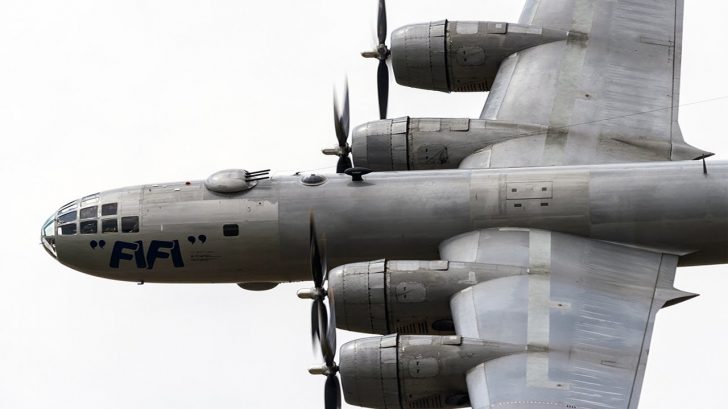Highly Sophisticated (At The Time)
The US knew the B-17 wouldn’t be effective in a war against Japan. Japan is located in the Pacific, where space for air bases is scarce. One solution to this problem is to design a plane that could fly longer without refueling. Since the aircraft was also designed to operate at higher altitudes, it needed a pressurized cabin.
Remote-Controlled Turrets
Four .50-cal Browning machine guns used by the B-29 were remote-controlled and aimed optically. Five General Electric analog computers were installed to compensate for the airspeed, gravity, temperature, and humidity to further increase accuracy. In one variant, the sighting equipment was removed to carry more fuel and payload.
Problematic Engine At The Beginning
The B-29’s engines weren’t perfect straight out of the box. At the start, its Wright R-3350 radial engines caused a lot of catastrophic failures and maintenance repairs. In fact, the second prototype’s engine caught on fire and crashed, killing the 10-man crew and 21 civilians.
Too Complex To Build
Four main-assembly factories were associated with manufacturing the massive B-29. The aircraft’s very sophisticated design, hurried development, and unique requirements caused many problems, resulting in setbacks that further increased its cost.
Breakdown of Costs
$3 billion was the estimated total cost of designing and producing the B-29. While in comparison, the Manhattan Project cost around $1.9 billion. However, almost 4,000 B-29s were built, each roughly costing $750,000. Meanwhile, 90% of the Manhattan Project’s budget was used to build the plants and produce fissionable materials. Less than 10% were actually allocated for development and production. Nevertheless, the project produced four bombs with an average cost of $500,000,000 per bomb.



